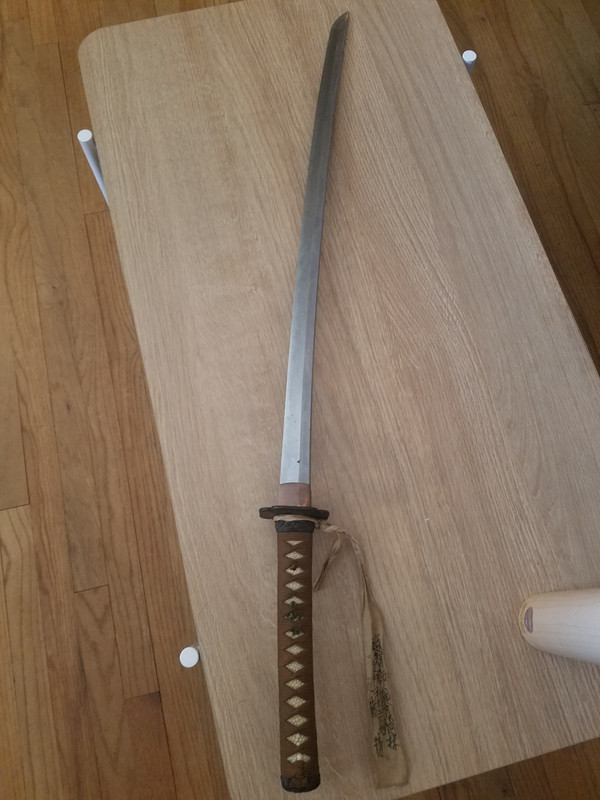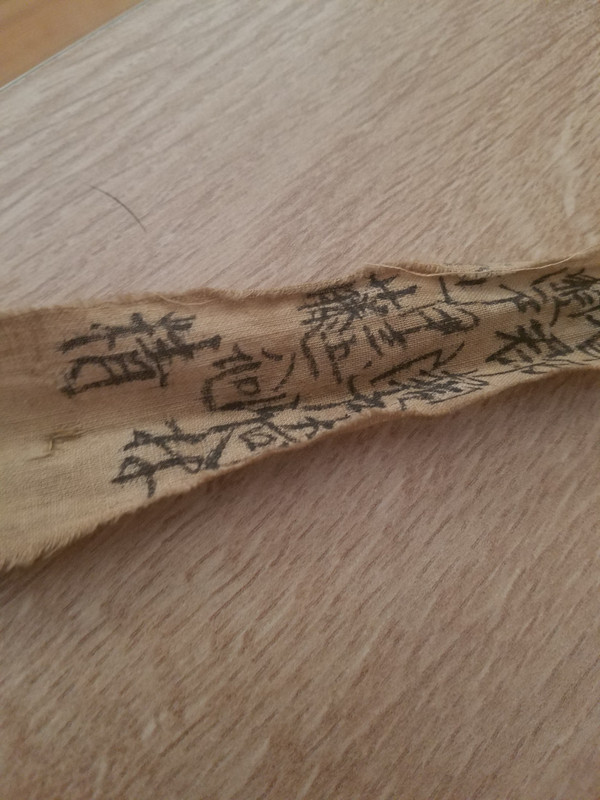- Joined
- Jul 25, 2021
- Messages
- 20
My grandpa left me this sword in his will. He got it while stationed in Japan after their surrender in WW2. He was allowed to bring one sword and one gun home out of a surplus of Japanese confiscated weapons. I took the handle off but there were no markings on the tang. Does anyone know anything about these swords? The sash has what I found to be old Chinese writing on it which translates roughly to: "Go this way to end your bloodline" Lol










